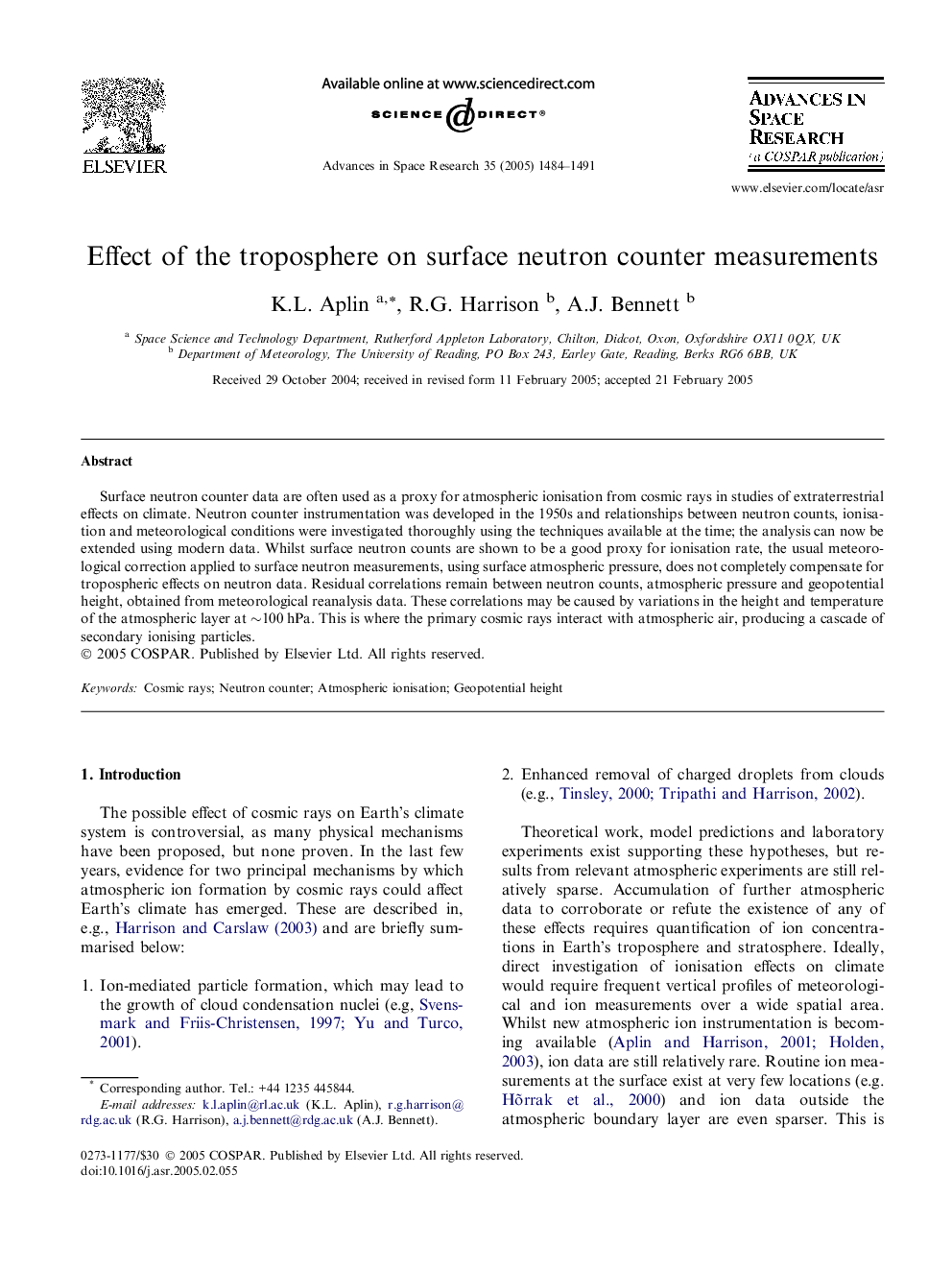| Article ID | Journal | Published Year | Pages | File Type |
|---|---|---|---|---|
| 10695792 | Advances in Space Research | 2005 | 8 Pages |
Abstract
Surface neutron counter data are often used as a proxy for atmospheric ionisation from cosmic rays in studies of extraterrestrial effects on climate. Neutron counter instrumentation was developed in the 1950s and relationships between neutron counts, ionisation and meteorological conditions were investigated thoroughly using the techniques available at the time; the analysis can now be extended using modern data. Whilst surface neutron counts are shown to be a good proxy for ionisation rate, the usual meteorological correction applied to surface neutron measurements, using surface atmospheric pressure, does not completely compensate for tropospheric effects on neutron data. Residual correlations remain between neutron counts, atmospheric pressure and geopotential height, obtained from meteorological reanalysis data. These correlations may be caused by variations in the height and temperature of the atmospheric layer at â¼100Â hPa. This is where the primary cosmic rays interact with atmospheric air, producing a cascade of secondary ionising particles.
Keywords
Related Topics
Physical Sciences and Engineering
Earth and Planetary Sciences
Space and Planetary Science
Authors
K.L. Aplin, R.G. Harrison, A.J. Bennett,
